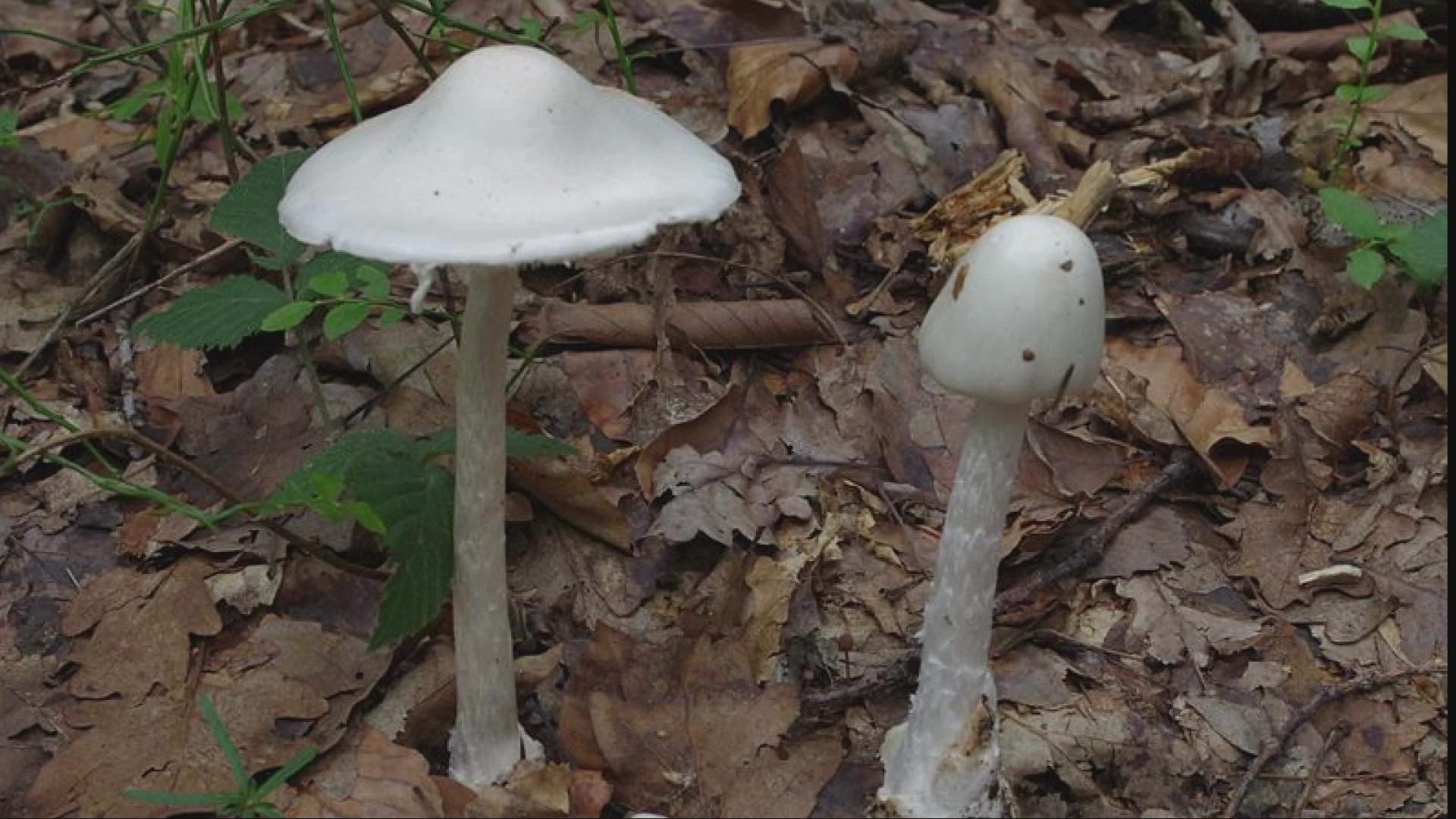CLEVELAND — Hospitals usually see cases of poisonings between September 15th and October 15th and thanks to the late summer rain, mushrooms are popping up everywhere.
Amateur foragers and backyard gardeners alike should be on alert for poisonous wild mushrooms, which can grow next to edible varieties. But consuming even a bite of them can be harmful.
Only about 3% of known mushroom varieties are poisonous, and the symptoms of poisoning can vary from gastrointestinal discomfort to liver failure and death, depending on the type of toxin ingested.
Bill Hickman is a beekeeper in Portage County. In mid-September he was mowing his mother’s yard when he noticed a patch of white mushrooms.
He has a plant identifier app on his phone that he often uses to check the vegetation around his house to see if it’s suitable for his bees.
The app told him the mushrooms were puffballs and safe to eat.
The app was wrong.
“I ate 'em for dinner. Thankfully, my wife and son didn't, and about eight hours later I became violently ill,” Bill said.
He had no idea he’d eaten one of the deadliest mushrooms, known as a "Death Cap" or "Angel Destroyer." Its scientific name is Amanita phalloides. And the toxin it contains is deadly.
“Basically it's about a 80% death rate if you eat one. And I ate four,” Bill said.
The most common dangerous mushrooms are those belonging to the Amanita genus, especially Amanita phalloides, aptly called “death cap” mushrooms. They contain toxic compounds called amatoxins that damage liver cells.
These mushrooms are white with umbrella-shaped tops and a cup at the base of their stem. They don’t look any more dangerous than supermarket varieties to an untrained eye, and they might actually taste good.
When he became sick, he assumed he picked up a cold or virus, never thinking it was the mushrooms. His wife, Tammy, knew something was very wrong. She called Poison Control and sent them a picture of the mushroom. They told her to get Bill to the hospital immediately.
“If it had been just a mushroom that makes you sick, you would throw up within a couple hours after eating it, so what they look for at Poison Control is the longer delay of onset illness, the more toxic it is,” Tammy said.
“Typically within eight to 12 hours, they develop very severe diarrhea, nausea, and vomiting severe to the point where they literally can get dehydrated, have kidney injury, lose a lot of minerals and salts from the body and get very sick,” says Dr. Pierre Gholam, a hepatologist with University Hospitals Cleveland Medical Center.
Dr. Gholam is a liver specialist and has seen several toxic mushroom poisonings. For the last ten years, UH has been a regional center for mushroom poisonings and has treated 57 patients. That number includes three so far this year, counting Bill, but Dr. Gholam fears more people may make the same mistake.
Tammy rushed Bill to a local hospital, then he was transported to UH Cleveland Medical Center and into Dr. Gholam’s care.
But Bill’s prognosis wasn’t good.
“He basically was preparing me for the worst. He said that they were expecting that he would be on a donor list for the liver transplant and that would be the good outcome of what they were seeing, but he could die,” Tammy said.
Bill’s body was shutting down from Amatoxin, the poison in the mushroom. After the vomiting passed, things actually got worse.
“That's when the really scary part of this disease comes along. And that's when you start developing inflammation of the liver, elevation of liver enzymes, jaundice, and in up to 30% of patients either get the onset of lethal illness death, or the need for an urgent liver transplant,” Dr. Gholam said.
Fortunately for Bill, the team at UH knew how to access a non-FDA approved antidote called Silibinin. But it wasn’t easy. The team had to contact the FDA and alert them to Bill’s case, fill out paperwork, get approval for use from the FD, then finally the drug was shipped to them from the supplier in Philadelphia.
The drug needs to be given within 72 hours of ingestion. Bill got it just in time, and it saved his life.
"Your likelihood of dying or needing a liver transplant is somewhere between 25 to 30% and the drug reduces that to about 5%. So it about six-fold reduces your risk of actually potentially having a lethal illness or needing a liver transplant,” Dr. Gholam said.
“When a doctor comes in and tells you you're heading in the right direction, it just, it gives you a second chance and it's just amazing,” Bill said.
He added that he’s grateful for his “first responder” wife Tammy for thinking fast and for the team at UH that saved his life.
There will be no more mushrooms in the Hickman house, but Bill’s story is one any amateur forager needs to heed. And never bet your life on an app.
Dr. Gholam says poison mushrooms are so prolific in Northeast Ohio he refers to eating them like playing Russian Roulette.
Signs of mushroom poisoning
Nausea, vomiting, abdominal pain and diarrhea are the most common initial mushroom poisoning symptoms. Some patients show up at the hospital with low blood pressure, a manifestation of septic shock.
In the case of Amanita mushroom poisoning, symptoms are usually delayed for 6 to 24 hours, by which time the toxins have been completely absorbed. After an initial phase of digestive symptoms, the patient may appear to recover for two to three days, followed by relapse with liver and kidney failure, which could lead to massive bleeding and death.
Mushrooms can also be toxic to children and pets, especially dogs. Take care to clear them from your yard.
More from Monica Robins:

